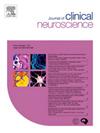垂体大腺瘤的单鼻内镜经蝶窦入路手术--手术中的微妙步骤。
IF 1.9
4区 医学
Q3 CLINICAL NEUROLOGY
引用次数: 0
摘要
Uninostril 鼻孔内经鼻腔方法的突出特点是能够保留鼻腔解剖结构,确保术后正常呼吸,同时减少术后鼻腔并发症。单鼻孔方法提供了简化的入路,加快了鼻腔阶段和闭合的速度,同时不触及对侧鼻孔,以便在需要时进行潜在的抢救性皮瓣。这种方法尤其适用于位于颈动脉内侧、核磁共振成像呈 T2 等强到高强信号的蝶鞍上 Knosp 0/1 垂体腺瘤的原发性病例。本文旨在阐明经蝶窦无鼻孔内手术的操作步骤的细微差别。患者的体位是关键,头部保持中立,位置高于心脏水平,并稍微向对侧倾斜。这种体位更符合人体工程学,可减少静脉出血,并加强重力辅助肿瘤切除。尽管 Uninostril 技术具有改善术后鼻腔质量和与双鼻孔方法相当的肿瘤总切除率等优点,但它也并非没有局限性。面临的挑战包括视野受限、器械可操作性有限,以及在出血过多或观察困难的情况下可能需要转换为双鼻孔方法。总之,这种方法为部分患者的垂体腺瘤切除术提供了一种可行的选择,有效地平衡了肿瘤切除和患者的相关结果。本文章由计算机程序翻译,如有差异,请以英文原文为准。
Uninostril endonasal trans-sphenoidal approach for pituitary macroadenoma–Operative nuances step by step
The Uninostril Endonasal Transsphenoidal approach stands out for its ability to preserve nasal anatomy, ensuring normal postoperative breathing while reducing postoperative nasal complications. The Uninostril approach offers a simplified access, expedites both the nasal phase and closure, all while leaving the contralateral nostril untouched, allowing for a potential rescue flap if needed. This method is particularly suited for primary cases of sellar suprasellar Knosp 0/1 pituitary adenomas located medial to the carotid arteries and with T2 iso to hyperintense signals on the MRI. The objective of this article is to elucidate the operative step by step nuances of the uninostril endonasal trans-sphenoidal surgery.
The patient positioning is key with a neutral head alignment positioned above the heart level and slightly tilted to the opposite side. This position is ergonomically better, reduces the venous bleeding, and enhances gravity-assisted tumor removal. Despite its advantages—such as improved postoperative nasal quality and a comparable rate of gross total tumor resection to the Bi-nostril approach—the Uninostril technique is not without limitations. Challenges include a restricted field of view, limited instrument maneuverability, and the potential need to convert to a Bi-nostril approach in cases of excessive bleeding or visualization difficulties. Overall, this approach provides a viable alternative for pituitary adenoma resection in selected subset of the patients, effectively balancing the oncologic resection and patient’s related outcomes.
求助全文
通过发布文献求助,成功后即可免费获取论文全文。
去求助
来源期刊

Journal of Clinical Neuroscience
医学-临床神经学
CiteScore
4.50
自引率
0.00%
发文量
402
审稿时长
40 days
期刊介绍:
This International journal, Journal of Clinical Neuroscience, publishes articles on clinical neurosurgery and neurology and the related neurosciences such as neuro-pathology, neuro-radiology, neuro-ophthalmology and neuro-physiology.
The journal has a broad International perspective, and emphasises the advances occurring in Asia, the Pacific Rim region, Europe and North America. The Journal acts as a focus for publication of major clinical and laboratory research, as well as publishing solicited manuscripts on specific subjects from experts, case reports and other information of interest to clinicians working in the clinical neurosciences.
 求助内容:
求助内容: 应助结果提醒方式:
应助结果提醒方式:


